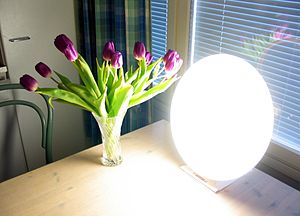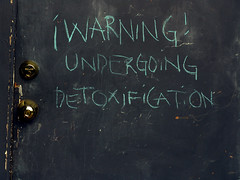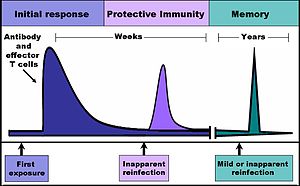This week we've got a guest article by one of our favorite health and fitness experts. Yuri is all about natural health, smart fitness, and reducing your toxic load via whole, natural foods that help your body heal and detox naturally. If you've never heard of leaky gut syndrome, or you don't know what it is, you should definitely read this article. This syndrome can promote allergies and food intolerances, increase toxic load, create inflammation within the body, and put a burden on all your bodily systems - leading to many different diseases and ill health consequences.
Read on to find out more about leaky gut syndrome, and how you can avoid this dangerous condition.
Leaky Gut Syndrome Explained
Yuri Elkaim, BPHE, CK, RHN & Amy Coates, RHN, BSc.
What is Leaky Gut Syndrome?
|
|
| The gastrointestinal tract, also called the digestive tract, alimentary canal, or gut, is the system of organs within multicellular animals that takes in food, digests it to extract energy and nutrients, and expels the remaining waste. (Photo credit: Wikipedia) |
Leaky gut syndrome is the technical name for increased intestinal permeability. As its name signifies, this condition is characterizes by a gut (intestinal tract) that allows far too many substances into the bloodstream.
Normally, the intestinal walls form a semi-permeable barrier, only allowing properly digesting nutrients into the bloodstream, while preventing the uptake of toxins and undigested food particles. Such nutrients are able to pass into the blood through pores located in the intestinal wall.
Under ideal circumstances, these pores are small enough to prevent undigested food particles and other large toxins from escaping the intestinal tract and causing damage in the bloodstream.
However, in the case of leaky gut syndrome, these pores widen, which allows anything and everything to pass through the (now very permeable) intestinal walls and into the blood.
This is a big problem and is one of the biggest factors behind food allergies and auto-immune diseases.
Why is Having a Leaky Gut Dangerous?
Our intestinal tract is obviously semi-permeable for a reason. If is meant to keep out certain substances then there's a reason for needing to do so.
One of the problems with leaky gut is that it allows undigested food particles into the blood. When this happens, the immune system builds up antibodies against the protein in that food and mounts a full-out immune response. The immune system is simply doing its job. If it identifies a "foreign" substance in the bloodstream, then it will take the necessary action to neutralize it.
Unfortunately, since the body has now developed an antibody army against this food, with time as you ingest this food your body will become "hypersensitive" to it. This is how food allergies develop. And the more this occurs with the foods you eat, the more hypersensitive your immune system becomes.
As a result, you become much more susceptible to environmental allergens since your body's immune system is now in overdrive and "paranoid" about everything little thing it is exposed to.
|
|
| The time-course of an immune response begins with the initial pathogen encounter, and leads to the formation and maintenance of active immunological memory. (Photo credit: Wikipedia) |
With time, a hypersensitive immune system can start reacting in a myriad of unpredictable ways. In many cases, it will actually begin to attack the body itself, creating an auto-immune disease such as alopecia, multiple sclerosis, celiac disease, Graves' disease, endometriosis, and many more.
A substantial proportion of the population suffers from immune diseases, which are often chronic, debilitating, and life-threatening. There are more than eighty illnesses caused by autoimmunity and about 75 percent of those affected are women. It has been estimated that autoimmune diseases are among the ten leading causes of death among women in all age groups up to 65 years.
However, go to your doctor, allergist, or immunologist and they will NEVER even mention the possibility of leaky gut syndrome.
According to "brilliant experts" at USA Today...
"Scientists believe multiple factors such as environmental toxins, heredity, viruses, and certain drugs may play a role in causing an autoimmune disease. Stress, poor diet, lack of exercise, lack of sleep, abuse of alcohol and use of tobacco can also weaken the immune system and may play some role as well."
That's great thanks. And they can say that about pretty much every single disease as well. The fact remains that many of these "causes" are also at the root of leaky gut syndrome.
What Causes Leaky Gut Syndrome?
Well, as was briefly mentioned above, the substances and choices that stress your body and digestive system will have a profound effect on the health of your colon and intestinal tract. Refined sugars, processed foods, alcohol, medications, and stress will negatively impact the colon.
All of these can worsen the balance between good and bad flora in your colon. If the bad are way out of control, then fungi, for instance, can latch onto the intestinal walls and create irritation, inflammation, and eventually widening of the pores.
If food sits in your colon for too long, it too will irritate the intestinal walls and predispose them to becoming more permeable. That is one of the reasons why passing regular bowel movements is so important.
Natural Leaky Gut Remedies

First, you need to cleanse your body of the foods and substances that irritate your digestive and intestinal tract. Second, you need to spend time healing your gut with nutrients such as L-glutamine, essential fatty acids, and vitamin C. Then you need to provide your intestinal tract with a balance of healthy bacteria through probiotics and enzymes, so that it can protect itself against future invaders and irritation.
So if you suffer from allergies, have an autoimmune disorder, have digestive difficulties, or want to improve your overall health then you need to take action immediately. The longer you wait, the worse your condition will get.
The first step is a full-scale natural cleanse which will reduce the toxins and inflammation in your digestive system.
The Total Wellness Cleanse™ is a gentle and natural detoxification process that will help heal your gut and cleanse your body of its toxins. To learn more about how the Total Wellness Cleanse can help you just click the link below.
About the Author:
Yuri Elkaim is a renowned fitness, nutrition, and weight loss expert. He is a registered holistic nutritionist and the co-creator of the Total Wellness Cleanse - a 30-day food-based cleansing program that has helped thousands of people lose weight, cleanse their bodies of toxic overload, and restore incredible health. For information on the Total Wellness Cleanse visit www.TotalWellnessCleanse.com.
References:
Noel R. Rose and Ian R. MacKay, “The Autoimmune Diseases” fourth edition
http://www.healthscout.com/ency/68/487/main.html#CausesandRiskFactorsofAutoimmuneDiseasesandDisorders
























